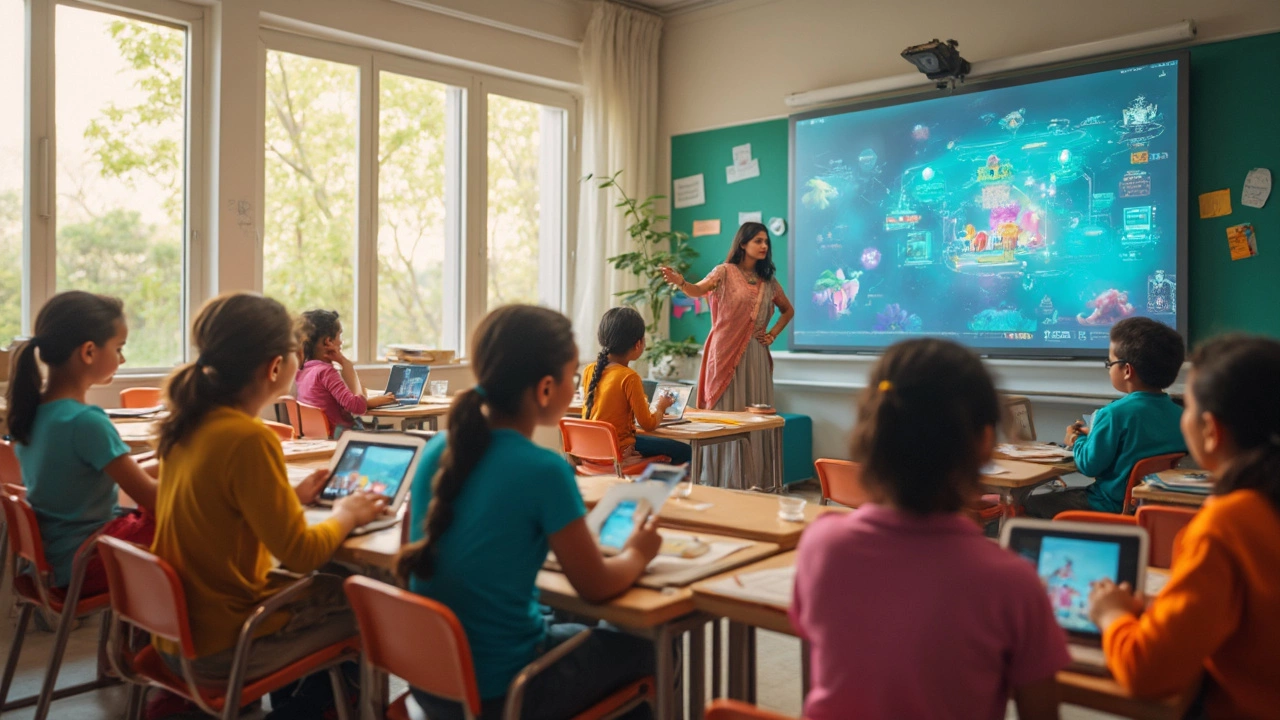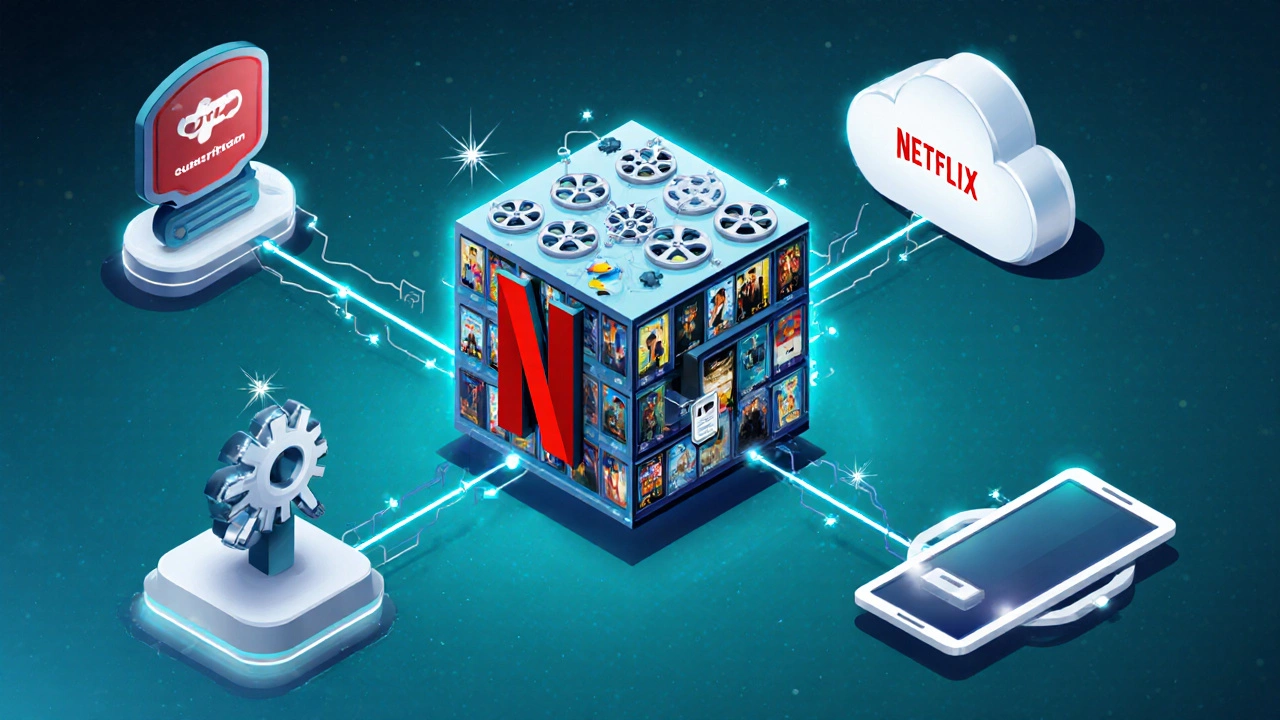Digital Learning Platforms: What They Are and Why They Matter

Imagine signing up for a new skill, clicking a link, and jumping into a class with people from ten countries—all before you even finish your coffee. That’s not the future anymore, it’s just how digital learning platforms work today. These platforms are websites or apps that let anyone learn just about anything, whenever and wherever they want. From coding bootcamps to language apps and online college degrees, there’s something for everyone.
What’s cool is that these platforms aren’t only for students. More and more companies, freelancers, and even retirees are using them to stay updated or find a fresh career path. The choices stretch from live virtual classrooms to self-paced videos, interactive quizzes, and smart progress tracking. Want to ask your teacher a question? Some platforms offer real-time chat or even video calls. You can even find systems where AI tailors the lessons to how quickly you’re picking things up.
The point is: digital learning platforms are changing the game—learning is no longer stuck in a classroom with set times and hardcopy textbooks. You have options, control, and often, better ways to actually remember what you learn. Still, not every platform fits every need, so knowing the basics helps you pick what works best for you, your schedule, and your goals.
- Getting to the Heart of Digital Learning Platforms
- Types of Platforms and What Sets Them Apart
- How They Are Shaking Up Education
- Features That Actually Make a Difference
- Choosing the Right Platform for Your Needs
- Smart Tips for Making the Most of Digital Learning
Getting to the Heart of Digital Learning Platforms
At the core, digital learning platforms are online spaces where people go to learn new stuff or teach skills to others. These aren’t just video libraries—they’re a mix of technology, content, and tools that bring learning to anyone with an internet connection. Whether you’re logging into Khan Academy for math, Duolingo for language, or LinkedIn Learning for business skills, you’re stepping into a digital classroom that’s open 24/7.
Most platforms started out just sharing content. Now, it’s like a full classroom experience, only you don’t need a school bell. You get structured lessons, interactive tests, reminders, and even discussion groups. According to a 2023 report from HolonIQ, the global e-learning market hit $399 billion, and that number keeps rising as more people turn to screens for everything from certification to hobby classes.
One massively important point: it’s not just about convenience. Studies from the International Society for Technology in Education show digital platforms improve learning by letting people go at their own pace and review material as often as needed. This flexibility can mean the difference between just passing and actually mastering something.
“Technology will never replace great teachers, but technology in the hands of great teachers can be transformational.” — George Couros, educational thought leader
So, while old school classrooms still matter, these platforms open up learning for anyone—full-timers, shift workers, parents, and folks in rural areas—without the usual barriers. Suddenly, learning Photoshop, accounting, or a new language is as simple as logging in and getting started.
Types of Platforms and What Sets Them Apart
Not all digital learning platforms are built the same, and it actually matters quite a bit which one you pick. Some go heavy on live classes with real instructors, while others stack up tons of pre-recorded videos for you to binge at your own speed. Here’s a quick look at the main types you’ll run into:
- MOOCs (Massive Open Online Courses): Think Coursera, edX, or FutureLearn. These offer college-level courses from places like Stanford or MIT to anyone. Many of them are free to start, with a fee if you want a certificate.
- Corporate Training Platforms: These are built for companies looking to upskill their employees. LinkedIn Learning and Udemy Business are popular picks. They track employee progress and offer bite-sized lessons so staff can learn between tasks.
- K-12 Learning Platforms: These cater to school students and teachers. Khan Academy and Google Classroom are stars here. Lessons are focused, sometimes matching specific curriculums, and teachers can actually assign and grade homework right on the platform.
- Skill-based Platforms: Sites like Duolingo or Codecademy skip the big lectures and jump straight into practicing a skill. They use games, streaks, and quick feedback to keep things moving.
- Virtual Classrooms: Zoom and Microsoft Teams aren’t usually seen as learning platforms, but tons of schools and bootcamps use them for live, face-to-face lessons online.
To get a clearer picture of what’s out there, check out this breakdown of some major players and what they’re known for:
| Platform | Main Focus | Users (2024) | Cost |
|---|---|---|---|
| Coursera | College courses, certificates | 125 million | Free to $99/course |
| Khan Academy | K-12 education | 140 million | Free |
| Duolingo | Language learning | 83 million | Free, paid premium |
| Udemy | Professional skills | 57 million | $10-$200/course |
| LinkedIn Learning | Business skills | 27 million | $39.99/month |
What sets these apart isn’t just content. For example, MOOCs often give you university-level lectures, but K-12 platforms might add parent dashboards and gamified quizzes. Corporate platforms take privacy and compliance way more seriously, and skill platforms keep you hooked with reminders and progress bars.
It’s smart to check whether a platform matches your style—if you love group chats, look for community features; if you hate waiting, go for on-demand videos. The best platform is the one that feels like it fits into your daily life instead of fighting against it.
How They Are Shaking Up Education
Just a decade ago, the idea of earning a degree from your couch or mastering a language from your phone sounded pretty wild. But these days, digital learning platforms are flipping the old school model on its head. They're not just swapping blackboards for tablets; they're breaking down barriers that used to make learning tough for lots of people.
First, think about access. Millions who never could step foot in a top university are now logging onto the same exact classes from anywhere in the world. Even rural students or those living far from big cities can join in, as long as they’ve got decent internet. According to a 2024 report by Class Central, 220 million people signed up for at least one online course last year—and that number is only climbing.
Flexibility is another big reason these platforms are a game-changer. Not everyone can learn at the same time or pace. Digital platforms let you pause a video, rewatch tricky parts, or jump ahead if you’re feeling confident. Night owls, parents, and people juggling jobs finally have learning options that actually fit their lives.
Collaboration looks different too. Instead of raising your hand in a crowded lecture, you’re now joining global chat rooms, Zoom calls, or group projects with people on four continents. Some tools even match you with a study buddy or mentor. This is making learning more social, less intimidating, and honestly, a whole lot more fun.
These platforms are also giving quick feedback. Old-school classes sometimes make you wait days or weeks to get a grade. Now, you finish a quiz and get instant results—so you actually know what to fix. This is huge for motivation and keeps learners moving forward.
- Schools are saving money and resources by sharing teachers and tech.
- Many test-prep and job-training courses are free or low-cost compared to traditional routes.
- Students with disabilities get custom features, like captions or adjustable fonts, that make learning fairer for everyone.
Bottom line, digital learning platforms aren’t just a trend—they’re actually changing how, when, and what we learn. With new updates rolling out all the time (think AI tutors and VR labs), this way of learning just keeps getting better.

Features That Actually Make a Difference
Not every online tool is worth your time. The best digital learning platforms have features that turn average lessons into stuff you actually remember. Let’s look at what matters.
- Interactive Content: Static slides don’t cut it anymore. The platforms getting high marks in 2025 are loaded with quizzes, hands-on projects, and simulations. According to Skillshare’s 2024 report, courses with active tasks help people remember material 40% better than those with just video lectures.
- Smart Progress Tracking: Platforms like Coursera and Khan Academy show you exactly how far you’ve gone and what’s left, so you don’t get lost. Some even use reminders and short check-ins to get you back on track.
- Personalization: These days, AI isn’t just hype. Companies like Duolingo and LinkedIn Learning use algorithms to suggest lessons and adapt questions based on what you struggle with, making sure you spend time where it counts.
- Discussion and Community: Good learning platforms don’t leave you alone. Many offer forums, live chats, or peer feedback right inside the lesson. In a 2023 survey by EdTech Magazine, 3 out of 4 students said that being able to talk to others kept them motivated to finish a course.
- Real Credentials: Finishing a course is one thing, but getting a badge or verified certificate is another. Most of the top-rated platforms now let you share these straight to LinkedIn or even download a PDF you can hand to an employer. For many jobs, those micro-credentials are actually making a difference in getting hired.
Let’s get hands-on: Here’s how some top platforms stack up by feature, based on data collected in March 2025:
| Platform | AI Personalization | Live Interaction | Verified Certificates |
|---|---|---|---|
| Coursera | Yes | Yes (select courses) | Yes |
| Udemy | Basic | No | Yes |
| Duolingo | Advanced | No | No |
| Khan Academy | Moderate | No | No |
| Skillshare | Basic | Yes | No |
The right features turn scattered reading into real knowledge and actual job skills. Even if you’re just brushing up on the basics, features like personalized feedback and reliable progress bars can mean the difference between giving up and pushing through to the finish.
Choosing the Right Platform for Your Needs
The options for digital learning platforms can feel endless if you’re just starting out. It’s easy to get stuck just staring at comparison charts instead of actually learning. Here’s how to make the process a lot simpler.
Start by thinking about your personal goals. Are you after a serious certification, or do you just want to pick up a hobby? Platforms like Coursera and edX partner with major universities if credentials matter to you, while places like Duolingo are better for a quick, fun skill boost. If your goal is career focused, LinkedIn Learning and Udemy offer tons of job-specific courses.
- Interactivity: Some people learn best by doing. Platforms such as Codecademy or Khan Academy let you practice as you go, instead of just watching videos.
- Community and Support: Does chatting with peers or having an active discussion forum help you? Skillshare and FutureLearn have lively student groups and built-in feedback tools.
- Price: Big range here! Some platforms, like MIT OpenCourseWare, are totally free. Others, like MasterClass, require a subscription. Always check if there’s a free trial so you can test it first.
- Device Support: If you’re always on your phone, be sure the platform’s app actually works smoothly on both Android and iOS.
Here’s a quick table showing what people say tops their list when picking a platform, based on a 2024 online learning survey:
| Top Factors | Percentage of Users Who Prioritize |
|---|---|
| Course Quality & Credibility | 64% |
| Low or No Cost | 51% |
| Mobile Access | 37% |
| User-Friendly Design | 29% |
| Peer Interaction | 23% |
Don’t rush into the first flashy ad you see. Look for trusted reviews or real user ratings. Even today, there are platforms still offering hidden fees, so read the fine print before clicking enroll. And if you’re learning as part of a team or for work, see if your company has deals with any providers or if they let you expense the costs. Matching the platform’s strength to your own preferred learning style makes it way more likely that you’ll finish the course—and remember what you actually learned.
Smart Tips for Making the Most of Digital Learning
Getting the most out of digital learning platforms isn't just about signing up and watching a few videos. You need a plan so you actually finish, remember, and use what you learn. According to the Online Learning Consortium, students who actively set goals and schedules are 2.5 times more likely to complete online courses than those who don’t.
Here are a few practical tips anyone can use:
- Set weekly goals: Don’t just say “I’ll study when I have time.” Pick specific days and times to learn, then treat it like an appointment you can’t miss.
- Break things down: Long courses can be scary. Knock them out by finishing one module or video at a time instead of thinking about the whole thing.
- Take notes: Jot things down in your own words. Apps like Notion or even a sticky note on your desk can help lock in what you learn.
- Join the discussion: Many platforms have forums or comment sections. Asking questions and swapping tips with others makes concepts stick.
- Mix it up: Watching a video? Hit pause and try solving a problem on your own. Need practice? A bunch of platforms like Duolingo or Kahoot add a game element so it’s not boring.
Staying motivated can be tough, especially if no one is looking over your shoulder. Harvard researcher Dr. Chris Dede once said,
"The key to successful digital learning is setting manageable tasks and holding yourself accountable, even in small ways."
Another thing most people miss—they don’t use the support that’s right there. If your platform has chat support, peer groups, or Q&A sessions, use them. These tools aren't just fluff—they're proven to help students finish more often.
Check out this short table of self-reported completion rates from a few popular platforms:
| Platform | Average Course Completion Rate |
|---|---|
| Coursera | 59% |
| Duolingo | 49% |
| Udemy | 31% |
One last tip—don’t be afraid to try a platform and jump to another if it’s not clicking for you. There’s no “one size fits all.” Digital learning is super flexible, so your plan should be too.

